 Hello, gentle readers, and welcome to the RPG Reload, the weekly feature where salad days sometimes give way to onion knights. Each week, we take a look at an RPG from the App Store’s past to see if it stands up to the test of time. It’s an opportunity to revisit old favorites, reflect on their place in iOS gaming’s history, or just to take a deeper dive than our reviews usually allow for. As the Cid on this particular airship, I try to plot a fair course from week to week, but if you feel like I’m missing out on any important RPGs, please let me know. You can comment below the article, post in the Official RPG Reload Club thread in the forums, or tweet me at @RPGReload. It might take a while before the game shows up, since I plan these things pretty far in advance, but you will see it sooner or later.
Hello, gentle readers, and welcome to the RPG Reload, the weekly feature where salad days sometimes give way to onion knights. Each week, we take a look at an RPG from the App Store’s past to see if it stands up to the test of time. It’s an opportunity to revisit old favorites, reflect on their place in iOS gaming’s history, or just to take a deeper dive than our reviews usually allow for. As the Cid on this particular airship, I try to plot a fair course from week to week, but if you feel like I’m missing out on any important RPGs, please let me know. You can comment below the article, post in the Official RPG Reload Club thread in the forums, or tweet me at @RPGReload. It might take a while before the game shows up, since I plan these things pretty far in advance, but you will see it sooner or later.
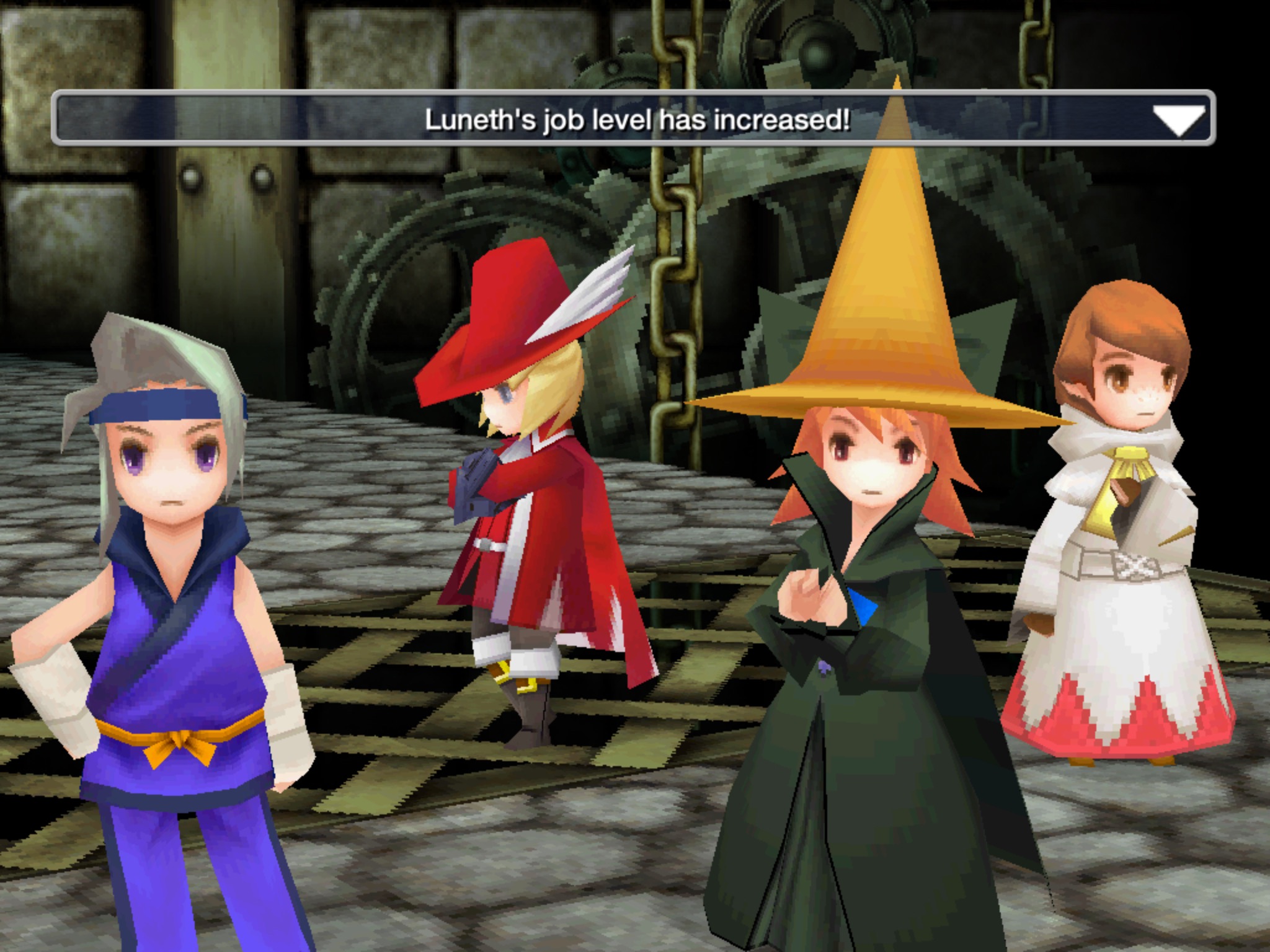
We’ve covered most of the major Final Fantasy releases in the RPG Reload already, and given some time, we’ll be covering more, I’m sure. There’s one release among the older ones that I had been putting off, skipping ahead to later Final Fantasy games to cover them first. That game is of course the subject of today’s article, Final Fantasy 3 ($7.99). As for why I put it off? Well, to be honest, I’m not a huge fan of Final Fantasy 3 even in its original form, and I like the remake even less. But I know many people like it, so I’m going to try to give it its due here. I should point out that my feelings about this game are relative to other Final Fantasy games. On its own merits, it’s quite a strong RPG. I’ll elaborate on my issues a little further down.
Due to the game not releasing outside of Japan until more than 15 years after its initial release, Final Fantasy 3 is one of the lesser-known entries in the series among English players. Its importance in the series shouldn’t be underestimated, however. Although Final Fantasy 2 ($7.99) had outsold the first game in the series by a small amount, a lot of players were unhappy with its unusual, counter-intuitive gameplay systems. Square had no intentions of putting down its new-found golden goose anytime soon, but it was quite evident that the next game in the series would need to win some people back if the series was to thrive. The main designer of the second game, Akitoshi Kawazu, was now working on an RPG for Nintendo’s new handheld system, the Game Boy, something that was either a happy coincidence or a cunning plan. Hiromichi Tanaka, who had assisted with design on the previous Final Fantasy games, stepped up into the main designer role, while most everyone else save Kawazu came back in their familiar roles.
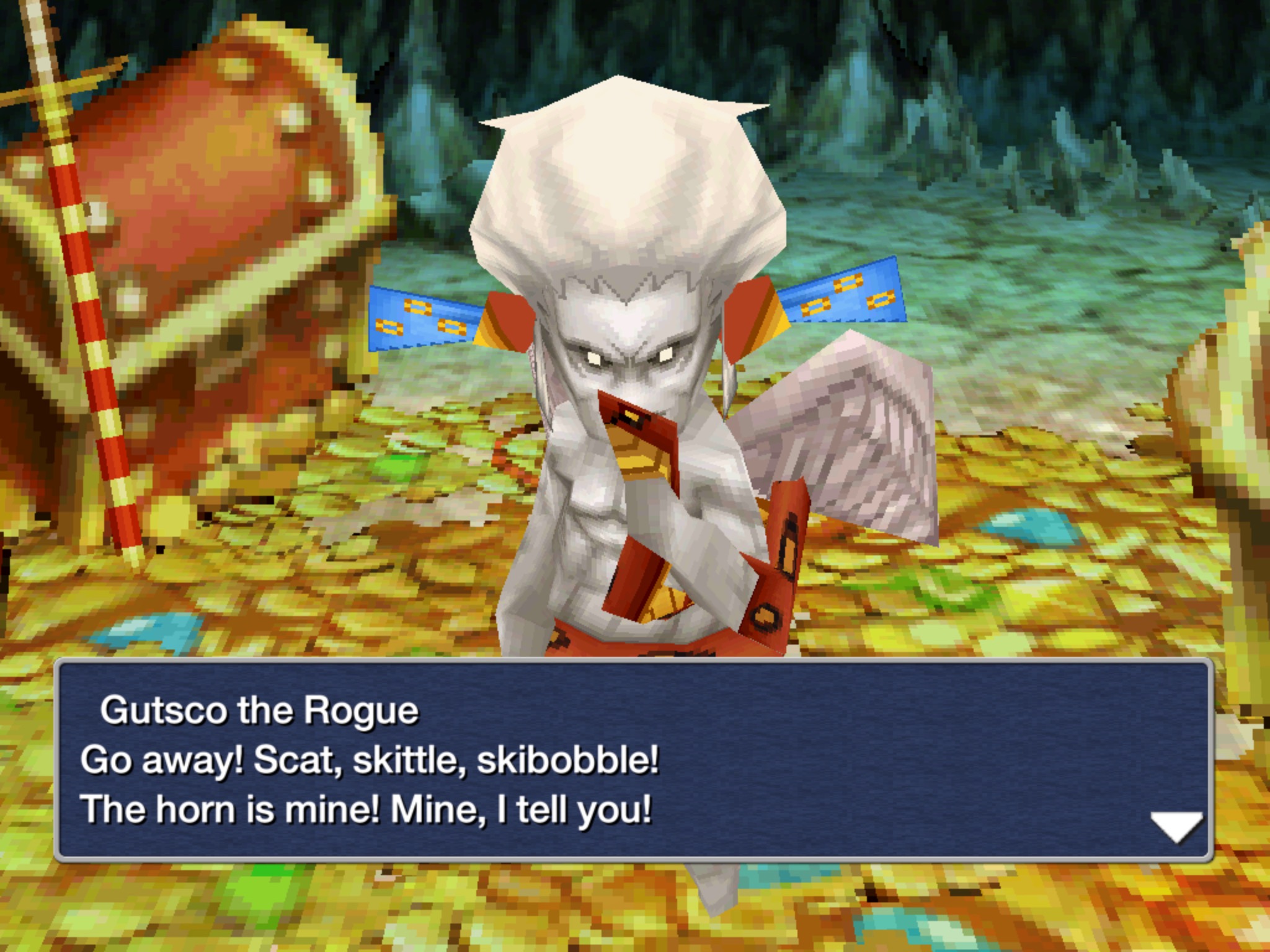
The idea for Final Fantasy 3 was to go back to what made the first game work and try to build from there. While not every idea from Final Fantasy 2 was discarded, virtually everything to do with the gameplay mechanics was tossed aside. Characters would once again gain experience points and go up in levels in the standard way, weapons and spells had set parameters that didn’t change no matter how often you used them, and your party was once more composed of four nameless blank slates who could be assigned to whatever job classes the player wanted. No keywords and notes, no monster closets, and no rotating party members who could leave without warning. While a few ideas from Final Fantasy 2 were preserved in some form, Final Fantasy 3 would look a lot more like a follow-up to the first game rather than the second.
I’m sure a fair bit of this was informed by the record-smashing success of Dragon Quest 3 ($9.99), which had used a lot of similar concepts as the first Final Fantasy ($7.99) and improved on them significantly. So while Final Fantasy had allowed you to build your party with whatever jobs you wanted to use, and even gave those job classes a mid-game promotion, Dragon Quest 3 allowed player to switch jobs at their leisure, returning to level one but retaining advantages from what they had learned prior. Dragon Quest 3 had also upped the ante when it came to story and the size of the world, too. It had a strong narrative, and it not only offered players the run of the whole world map, there was even a second world to explore. As a new Dragon Quest game was apt to do in those days, Dragon Quest 3 had redefined expectations for the genre, and it had done that with many of Final Fantasy‘s own tricks.
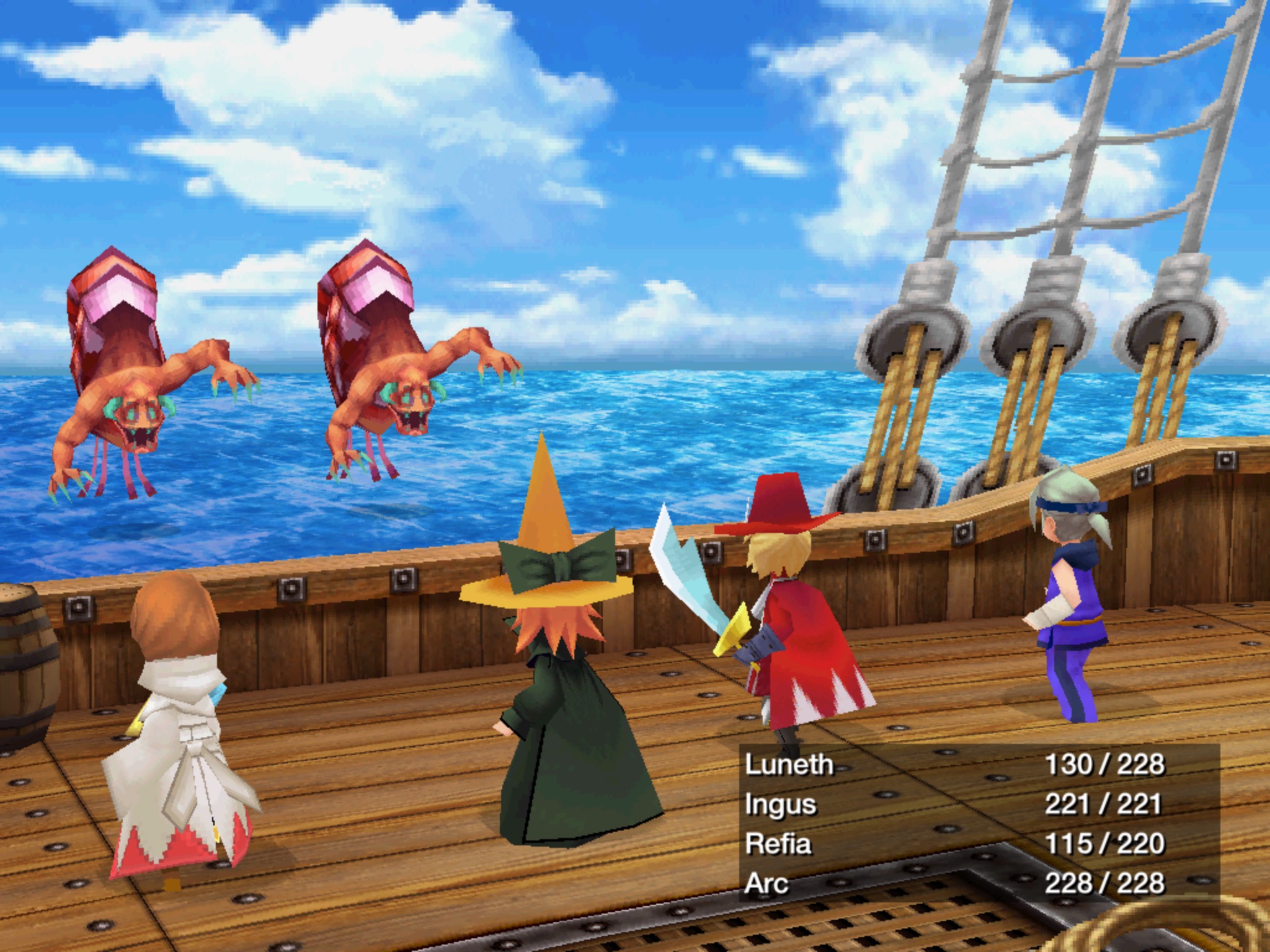
Final Fantasy 3 had to win back disillusioned fans and try to provide a competent answer to the biggest RPG success to date, and it had to do it all within a reasonable timeframe because Nintendo’s new hardware was on the horizon. Its ambitious nature, along with a Visa mishap on the main programmer’s part, ended up throwing another spanner into the works. The game’s original planned release date of December of 1989 sailed by, resulting in the game coming two months after the latest Dragon Quest game rather than two months before. Would the audience still be hungry so soon after a major title? Even worse, would Dragon Quest 4 ($14.99) change everything the way the previous game had, leaving Final Fantasy 3 to look quaint in comparison? I’m sure more than a few people at Square were pretty worried, but it all seems to have worked out for the best. Dragon Quest 4 did change the rules again, but it did so in a way that left an opening for the kind of experience Final Fantasy 3 provided.
The team working on the game did what they had to do. They made the game so big it filled the second-largest cartridge size officially available on the NES to the brim. There were two world maps to explore, tons of dungeons, a huge variety of enemies, a large and varied soundtrack, and a bunch of visual themes. On balance, Final Fantasy 3 probably reuses fewer assets than Final Fantasy 4 ($7.99) did. But the most important thing Final Fantasy 3 introduced to the series was its advanced take on the job system. At the start of the game, all four characters shared a generic job class, but players would soon have the opportunity to change their party members to their choice of nearly all of the starting jobs from the original Final Fantasy. Characters were not locked into these jobs and could change at any time, allowing players to swap their party around as needed. In the original version, switching jobs required capacity points which are earned after every battle. As characters used each job, their job level would go up, improving their stats and reducing the number of capacity points spent to switch to that job. As players made their way through the game, they would unlock different and more powerful jobs, several of which echoed some of Final Fantasy 2‘s named cast.
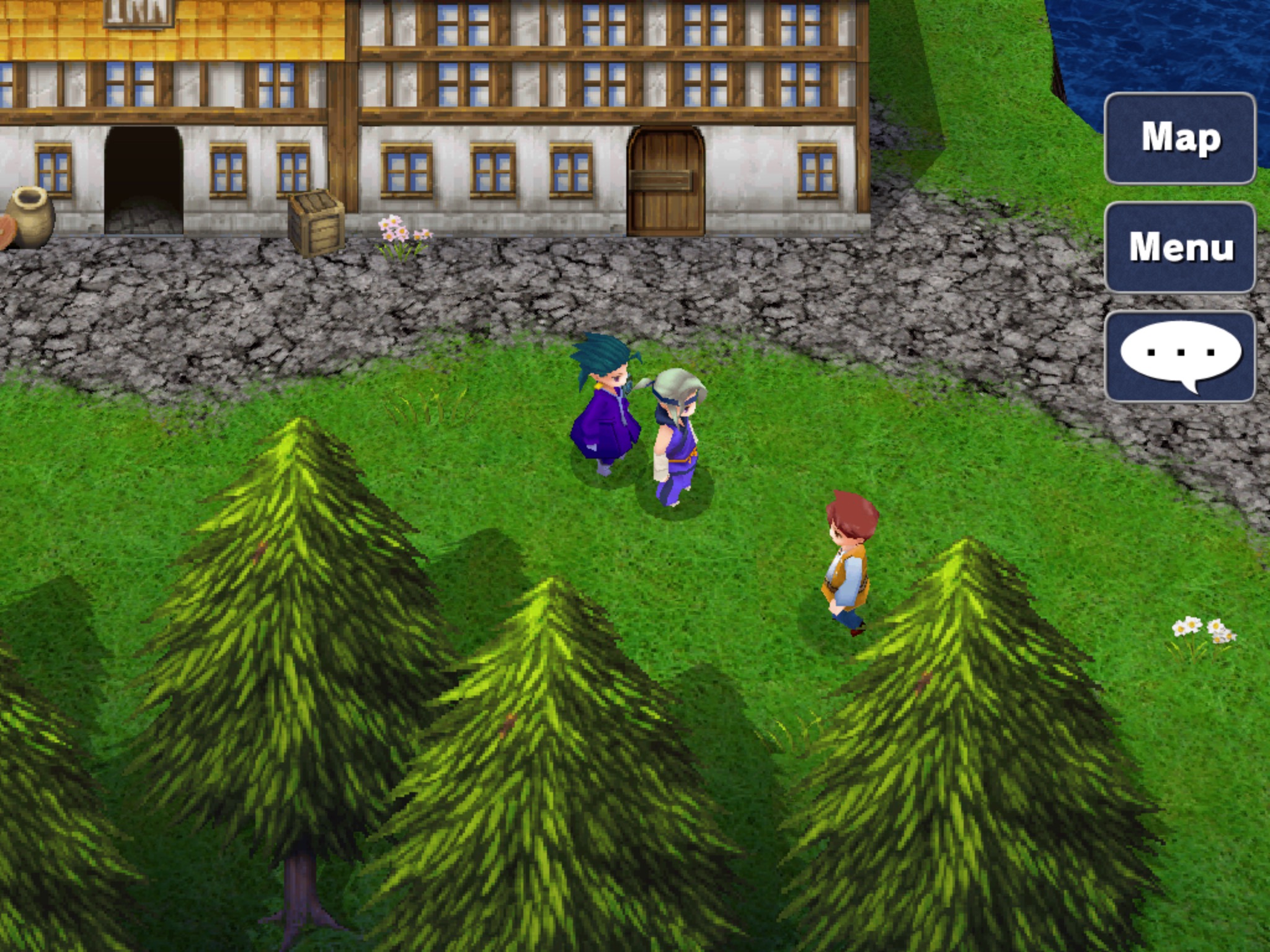
On top of the ability to swap around jobs, Final Fantasy 3 also introduced job-specific commands to the series. Thieves could steal, dragoons could perform jumping attacks, and so on. This simple addition opened up the field for potential jobs, as even players who paid only the most cursory attention to stats and equipment could experience the differences between the various classes. Job abilities also greatly improved the combat variety, particularly for melee classes who were no longer relegated to fight, defend, or item on each and every turn. While the job system in Final Fantasy 3 is very much a prototype compared to the one found in later installments of the series, in 1990 it was fresh, exciting, and immensely satisfying in terms of the complexity and options it offered. For everything else Final Fantasy 3 accomplished, it was this job system that would serve as its main contribution to Final Fantasy‘s distinct identity.
The other major element it contributed to the series was the Summoner job class, a type of mage who could call on special monsters with powerful abilities. The best of these monsters had to be hunted down and earned by beating them in combat, which means Final Fantasy 3 also introduced the first meaningful optional bosses in the series. While they act as sort of a hyper-mage mechanically, summoners would become one of the symbols of Final Fantasy and play major narrative roles in many future installments.

All of the work the team put into the game paid off handsomely. Final Fantasy 3 was the first game in the series to break one million copies sold in Japan, effectively demonstrating that the series was here to stay. The fans loved the game, and the overwhelmingly positive reaction to the intriguing job system guaranteed its return in an advanced form in Final Fantasy 5 ($14.99). Unfortunately, the combination of the first Final Fantasy game making a late international debut a few months after Final Fantasy 3‘s Japanese release and the impending launch of the Super NES meant that an English version never even hit the planning stages. When Square eventually got around to doing their first round of remakes and re-releases of the early Final Fantasy games, Final Fantasy 3 was left out. The reasons for that vary, with some saying the source code was lost and others suggesting it was simply too big of a game to remake within a reasonable budget. Either explanation makes sense, and I wouldn’t be surprised if it was some combination of the two. Without a remake or re-release, however, there was little chance of an English release of the game. Hardcore fans could only rely on fan translations.
It wasn’t that Square didn’t want to remake the game, however. When they announced their support for Bandai’s Wonderswan Color handheld, Final Fantasy 1 through 4 were all mentioned, and some screenshots of a beautiful 2D remake of Final Fantasy 3 were even shown. For various reasons, the first two games and the fourth got their Wonderswan versions, but Final Fantasy 3 had slipped away yet again. Not that it mattered for English gamers, as the Wonderswan never released outside of Japan, but if the game had been finished, it might have made it as part of the line of Game Boy Advance ports Square released a few years later. A few years later, Square was considering doing a PlayStation 2 remake of the game when Nintendo approached them about remaking the game for their new Nintendo DS handheld. Apparently, Square thought that was a good idea, and tapped Hiromichi Tanaka to direct it.

Final Fantasy 3 DS released in Japan in August of 2006, more than 16 years after its previous (and only) release on the 8-bit Famicom. The long-awaited English version came out a few months later, finally plugging the last hole in the series for international fans. Final Fantasy 3 DS would go on to sell more than a million copies, paving the way for a DS remake of Final Fantasy 4 that didn’t do quite as well. The Nintendo DS version of the game would serve as the basis for every release of Final Fantasy 3 that followed, save for Japanese Virtual Console releases of the original version on the Wii and 3DS. The first additional platform it was ported to was iOS in March of 2011, but releases on Android, PSP, Ouya, Windows Phone, and PC would come in the following years. It seems fairly unlikely that Square will remake the game from scratch anytime soon, so aside from some minor tweaks, this is the version that English fans will be playing for the foreseeable future.
In my opinion, that’s regrettable. While in some places, Final Fantasy 3 DS clings a little too strongly to its source, there are major changes to the game that aren’t always for the better. Some of them, like changing the four nameless warriors into named characters with personalities, were due to trying to modernize the experience for the large portion of the audience that would be experiencing it for the first time. Many of the changes, like the way the job system works, were simply down to Tanaka wanting to refine and rebalance the original gameplay mechanics. The other changes unfortunately spring from having to deal with the Nintendo DS’s hardware limitations. Final Fantasy 3 was a 3D game, and in spite of how many games went that route, pushing polygons was hardly one of the Nintendo DS’s strengths. An exact recreation of the original game in polygons on the Nintendo DS simply wasn’t going to happen, and some decisions were made that every following version released on more powerful hardware has had to live with.
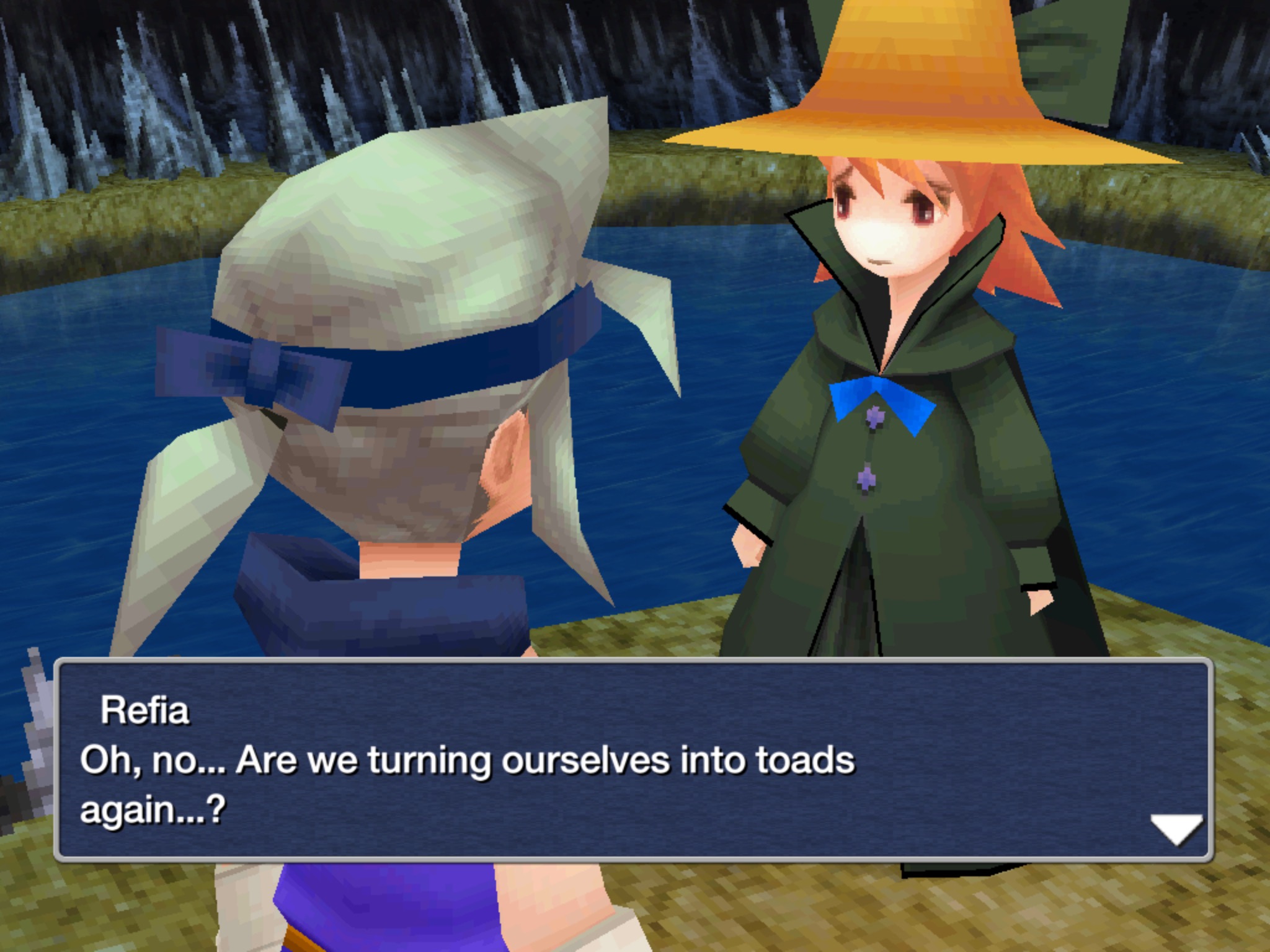
You see, Final Fantasy 3 was a pretty hard game to begin with. I’d go so far as to say that it’s probably the most difficult game in the series when comparing vanilla forms. Bizarrely, nearly every change made to the remake makes it a more difficult game, or at least a less enjoyable one. The jobs are balanced so that end-game jobs don’t render earlier jobs obsolete, but that’s generally achieved by nerfing the best classes rather than buffing the worst. Since the Nintendo DS couldn’t display that many polygons on-screen at once, enemy groups were reduced from as many as nine at once in the Famicom version to a maximum of three at a time in the DS remake. To compensate for that, every enemy in the game has gotten a boost to its stats, which probably seemed like a good way to equal things out on paper. In practice, it makes battles slog on a lot longer than they need to, as it’s much harder to clear the field with multi-target attacks.
This buffing extends even to the bosses who, in addition to gaining stat boosts, can sometimes take more actions per turn than they could in the original version. This is particularly apparent in the game’s climactic boss gauntlet, where a few unlucky turns can wipe out all but the most overleveled of parties. Sadly, one aspect that wasn’t changed was the lack of save points in dungeons. It’s not a big problem for most of the game as dungeons rarely run more than 20 minutes or so at their largest, so if you wipe at the boss and need to restart you haven’t lost that much. Its in the game’s brutal final dungeon that all of these changes come together to create one of the nastiest stretches in any Final Fantasy game. The final areas take upwards of an hour to go through, and the aforementioned boss gauntlet can rip you to shreds if you’re not of a high enough level or are just plain unlucky.

In the original version, you could simply switch your characters to the two ultimate jobs you had recently unlocked and smash your way through, but in the remake, those two jobs have been hit hardest by the rebalancing. With no save points on offer, there’s a high chance a player might need to replay this lengthy sequence multiple times before finding success, and I’ve heard more stories about people quitting the game here and never returning than in every other Final Fantasy game put together. While I can appreciate that Final Fantasy 3 is perhaps the only legitimately difficult Final Fantasy game on iOS, I much prefer the original version’s balance and overall challenge level.
Looking at other changes, the new named characters and their backstories don’t amount to very much at all, serving mostly to slow down the game’s opening hours. Before long, their personalities mean so little to the story that the game’s narrative flow doesn’t come off terribly different from the original version’s. It feels like a bit of a wasted opportunity, but on the other hand, there’s a certain simple charm to Final Fantasy 3‘s story that might have been suffocated by too many changes. Descending into the lower world for the first time was a shocking moment, and I’m not sure any amount of additional dialogue could increase its impact. As for the alterations to how changing jobs works, I’m of two minds on it. I think it encourages you to hop around and try out different jobs since the lasting cost isn’t significant, but the temporary stat penalties can make things more difficult in a pinch.

I’ll admit that most of my gripes with this game come from the more unusual perspective of having played the original version of Final Fantasy 3. It’s not that this version is a bad game by any means. It’s quite good, in fact. It’s just that it’s worse than the original game, in my opinion. It’s more punishing and less fun, and that’s quite atypical for a Square remake. I guess I’m glad they didn’t turn it into a walk in the park the way they did with the other Famicom Final Fantasy remakes, but it’s too bad it lost so much of its original identity in the transition. It’s a little confusing because they left in so many of its irritating bits, like needing to cast Toad as a sort of dungeon key on multiple occasions, or the dreaded Shadow Dungeon where using anything but Dark Knights will cause you a lot of trouble in a hurry. You end up with a strange hybrid of vintage issues and modern ones.
If nothing else, the iOS version of the remake is quite good, and Square Enix has maintained it well. The graphics look as good as they’re going to thanks to the high resolution of the screens on iOS devices, and updates have ensured that the game supports newer features like iCloud, larger iPhone screens, and MFi controllers. You don’t have to worry about all of the (now defunct) WiFi unlockable nonsense found in the Nintendo DS version, either. You can do it all through the course of a normal game, which is pretty great because writing letters to people to unlock a bonus dungeon and an extra job class was kind of annoying. Unfortunately, this is one of the last big releases from Square Enix that isn’t universal, so if you want to play it on your iPad and your iPhone, you’ll need to buy separate versions.

As you can probably guess from the critical tone of this Reload, I didn’t particularly enjoy revisiting this game. I have to be in the right mood to enjoy Final Fantasy 3 to begin with, and even then, I’d much rather play the original version. As long as you don’t mind a challenge, I think this game has a lot of appeal to those who aren’t attached to any other version, but words cannot convey enough how much I’d rather be running an overpowered ninja/sage group through those last areas, sweeping out massive groups of enemies in one terrible incantation of black magic. At the very least, I wish they would add in the option to use the original chiptunes like the PSP version allows for.
That’s just my take on Final Fantasy 3, though, and I’m sure it’s not a popular one. What do you all think? Let me know by posting in the comments below, dropping by the Official RPG Reload Club thread in the forums, or by tweeting me at @RPGReload. As for me, I’ll be back next week with the seventh chapter in our look at the history of handheld RPGs. Interestingly enough, it’s covering the Nintendo DS. In spite of what you may think from reading this particular Reload, it’s one of my favorite game systems of all-time, so it should be a good time. Thanks for reading!
Next Week’s Reload: The History Of Handheld RPGs, Part Seven